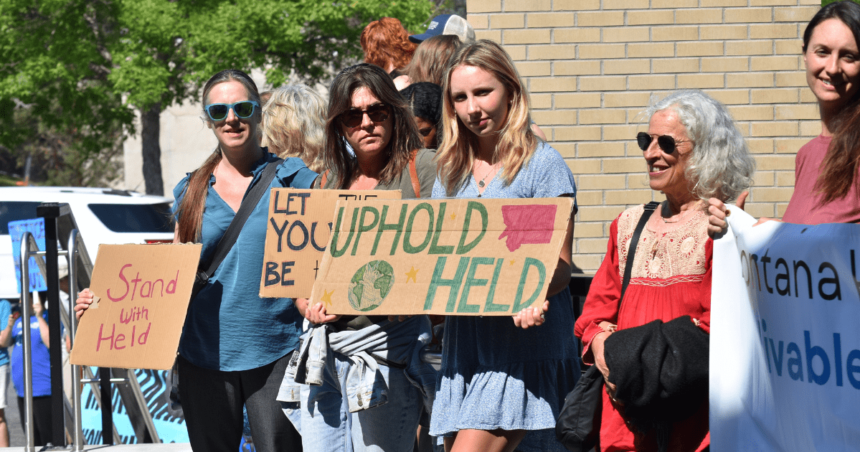HELENA — Attorneys provided insights into the scope of environmental protections under the Montana Constitution and the separation of powers in a significant climate lawsuit on Wednesday.
During a hearing that attracted hundreds of observers, the Montana Supreme Court heard contrasting opinions on whether the Constitution’s environmental protections should mandate state agencies to consider climate-related analyses when evaluating fossil fuel projects, as reported by the Montana Free Press.
The Held v. Montana case was initiated by 16 young Montanans who claimed in their 2020 lawsuit that the state had neglected their constitutional right to a “clean and healthful environment” by failing to assess the climate impact of projects like coal-fired power plants and oil pipelines.
In a trial held last June, the plaintiffs argued that the state’s approval of such projects led to adverse effects on their physical and mental health, economic stability, cultural customs, and recreational activities due to factors like longer wildfire seasons, reduced snowpacks, diminished streamflows, and extreme weather events.
Amanda Eggert / MTFP
Last August, Judge Kathy Seeley of Lewis and Clark County District Court ruled in favor of the plaintiffs. In a 103-page decision, she determined that Montana played a role in the harm suffered by the youths and could mitigate it by changing how it reviews energy projects.
Seeley ordered the state to include greenhouse gas analyses in its environmental assessments, a process currently underway at the Montana Department of Environmental Quality. She also stated in the ruling that the state must either have the discretion to reject permits for fossil fuel activities producing unconstitutional environmental damage or declare the permitting statutes themselves unconstitutional.
During Wednesday’s hearing, the state’s attorneys emphasized that Montana acknowledges the reality of climate change and its human-induced acceleration. Dale Schowengerdt, representing Gov. Greg Gianforte and state agencies in the appeal, focused on the limits of judicial power in addressing climate change.
Schowengerdt and Montana Department of Justice Attorney Mark Stermitz argued that the court should consider the case in the context of a specific permit decision and questioned the plaintiffs’ lack of a clear remedy.
On the plaintiffs’ side, attorney Roger Sullivan contended that determining the constitutionality of laws like the one in question falls within the Supreme Court’s purview. He highlighted the clear protection afforded to Montanans’ environmental rights in the state Constitution.
Referring to the state’s previous arguments, Stermitz suggested that even eliminating all fossil fuels in Montana would not address the harm alleged by the plaintiffs, raising questions about their standing to bring these claims.
The state’s appeal received support from various entities, including industry associations, while stakeholders backing the district court’s decision included outdoor recreation groups, health professionals, legal scholars, and conservation organizations.

Amanda Eggert / MTFP
Sullivan stressed the pressing nature of the issue before the Supreme Court, emphasizing the constitutional obligation to protect Montana’s “environmental life support system.” He addressed changes to the Montana Environmental Policy Act affecting climate analyses and access to judicial remedies in light of poorly-informed permitting decisions.
Responding to a question about the readiness of the issue for judicial review, Sullivan underscored the current climate crisis in Montana and the need for immediate action.
Justice Jim Rice referenced another case involving a gas plant in Laurel, raising concerns about the specificity of the current lawsuit compared to cases with concrete permits.
In a post-hearing conference, Andrea Olson from Our Children’s Trust highlighted the urgency of the situation and the need for comprehensive solutions to address the root causes of the climate crisis.
The justices have not indicated a timeline for their ruling.





